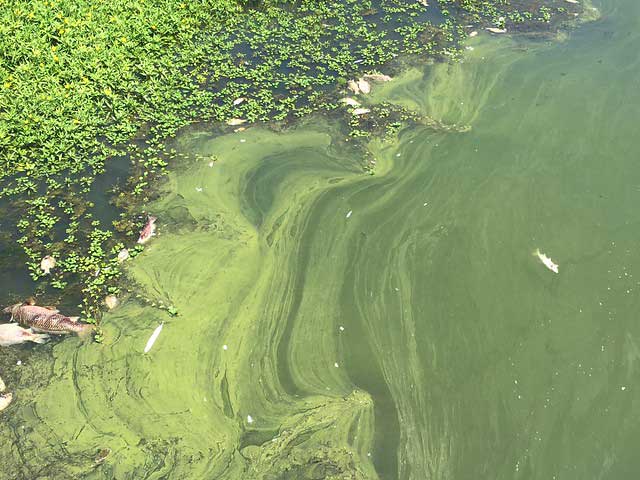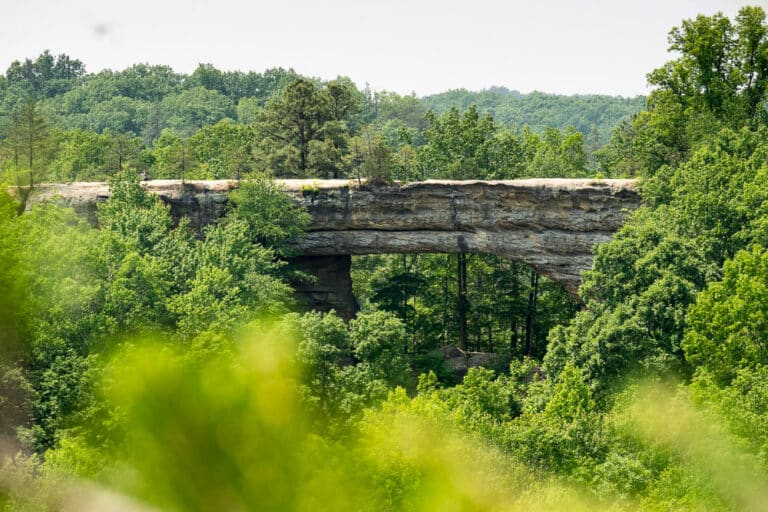Toxic algae is killing dogs in the southeast
Dog owners: beware. A toxic blue-green algae known as cyanobacteria has killed four dogs in North Carolina and Georgia this week. The dogs died after swimming in, and most likely drinking, algae-contaminated water, leading to liver failure.
According to WDBJ the Virginia Department of Health said the same toxic algae has been spotted in the counties of Orange, Louisa and Spotsylvania County.
Cyanobacteria can cause skin rash and gastrointestinal illness, such as upset stomach, nausea, vomiting, and diarrhea. If you have been exposed to contaminated water, wash off with fresh water as soon as possible and monitor symptoms.
Symptoms of exposure in dogs include diarrhea, vomiting, weakness, drooling, difficulty breathing or seizures. If your dog experiences any of these symptoms, take the animal directly to the vet.
Recent warm water conditions make favorable conditions for an algae bloom. The toxic algae can bloom in freshwater and saltwater and may be hard to spot.
Look for foam or scum on the water and blue, red, vibrant green or brown colors on top of the water that can resemble spilled paint. Toxic algae can also smell very bad, though animals may be attracted to the odor.
The Department of Health advises the public to avoid contact with the Upper and Middle Pamunkey Branches as well as the Upper and Middle North Anna Branches of Lake Anna.
Routine monitoring occurs monthly above Route 208 on Lake Anna. Test results indicate samples collected on July 30 at sites within these areas contained potentially harmful algae (cyanobacteria) that exceed safe swimming levels.
The Virginia Department of Health posted swimming advisories for the following areas of the lake along with safety tips. SEE MAP.
Pamunkey Branch (NO CHANGE FROM PRIOR ADVISORY)
- Upper – From the upper inundated waters of the Pamunkey arm of the lake downstream to the confluence with Terry’s Run
- Middle – From the confluence of Terry’s Run with Pamunkey Creek downstream to Rt. 612 (Stubbs Bridge)
- Terrys Run – from the upper inundated waters of the lake downstream to the confluence with Pamunkey Creek
North Anna Branch (CONTAINS CHANGES FROM PRIOR ADVISORY; “UPPER” ADDED AND “LOWER” REMOVED)
- Upper – From the upper inundated waters of the North Anna arm of the lake downstream to the Rt. 522 Bridge.
- Middle – From the Rt. 522 Bridge downstream to the Lumsden Flats / Rose Valley cove
WHEN IN DOUBT, STAY OUT!
- Avoid contact with any area of the lake where water is green or an advisory sign is posted,
- Do not allow children or pets to drink from natural bodies of water.
- Keep children and pets out of the areas experiencing a harmful algae bloom and quickly wash them off with plenty of fresh, clean water after coming into contact with algae scum or bloom water.
- If you or your animals experience symptoms after swimming in or near an algal bloom, seek medical/veterinarian care.
- To ensure fish fillets are safe to eat, properly clean fish by removing skin and discarding all internal organs, and cooking fish to the proper temperature.
- If you suspect you experienced health-related effects following exposure to a bloom, contact the Virginia Harmful Algal Bloom Hotline at 1-888-238-6154.
- To learn more about harmful algae blooms or to report an algae bloom or fish kill visit www.SwimHealthyVA.com.
Photo from the California Department of Fish and Wildlife: A blue-green algae (cyanobacteria) bloom at Clear Lake, Lake County, California, resulted in oxygen depletion in the water and the subsequent mortality of multiple aquatic species, including carp, catfish, bluegill and crappie. CDFW photos taken Aug. 1, 2016 by Kirsten Macintyre.
https://creativecommons.org/licenses/by/2.0/








